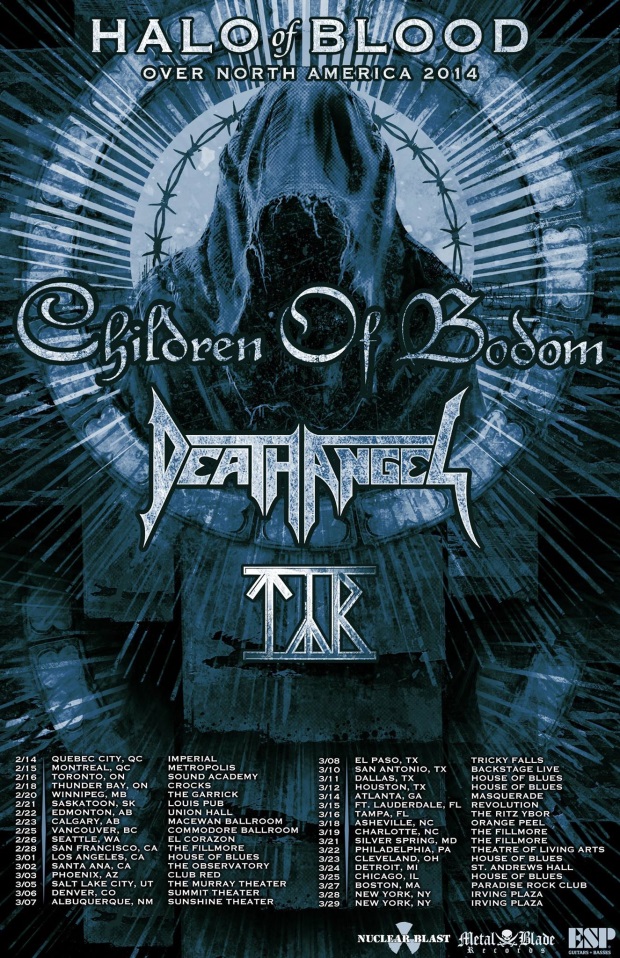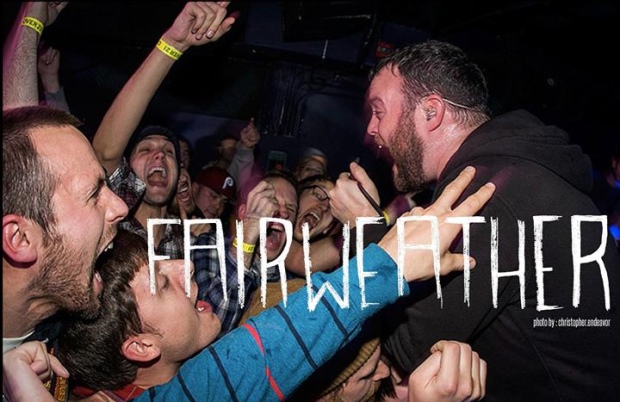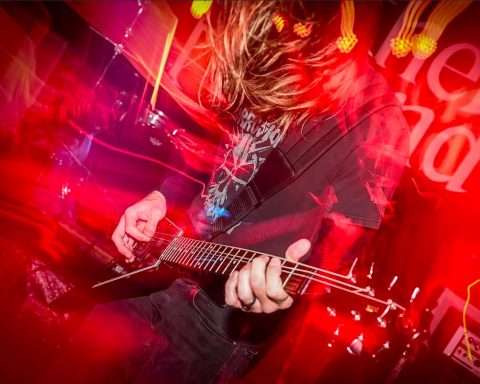Los Angeles, California’s THE LAST (featuring Karl Alvarez and Bill Stevenson from DESCENDENTS and ALL) have released a lyric music video for the track “Anybody Else”, off the band’s latest record “Danger”.
Here’s the full story of the band:
Our story begins in 1965, 1975, 1976, or perhaps it really begins one evening in the late summer/early fall of 1978. Members of the only two punk rock bands in Hermosa Beach, California had arranged to meet each other for the very first time. As it happened, the host band’s drummer was not available and a young friend of that band’s singer was going to fill in for the night. His name was Bill Stevenson. That evening, he would make his public debut, drumming for a rather riotous conglomeration of most of the members of Black Flag and The Last. It was there and then that the later-to-be-legendary South Bay scene really began.
The Last had been playing all over Hollywood since their debut that January at the Masque. They had released a single on their own Backlash record label the previous November, and they were certainly something of an inspiration for other fledgling South Bay musicians, such as the relatively new Black Flag.
Joe Nolte remembers his first sighting of Bill Stevenson as a somewhat incongruous vision. Bill was pedaling up on a too-small bicycle with fishing poles sticking out of the back. Nolte remarks, “Little did I know that this same guy was going to end up saving my life.” He is almost certainly referring to Bill’s monumental help in recording and producing the new Last album, Danger (End Sounds), their first release in 17 years.
Nolte, who founded The Last in 1976, is sometime hailed as the “Godfather of South Bay Punk” by people who remember those long ago days – people like Keith Morris (Black Flag, OFF!, Circle Jerks, FLAG), who recalls, “Where we grew up, all the music around us was Top 40. Most of it was pretty bland, pretty boring, and there was no bright spot – with the exception of The Last.”
Bill Stevenson, producer and member of Descendents, ALL, Black Flag, FLAG, and Only Crime, points out, “The Last are how you get from the Kinks to the Descendents. There is no other way.”
It was this influence on his own music that got Stevenson to convince Joe and his brother, Mike Nolte, to get together with him and Karl Alvarez (Descendents, ALL) to work on new material in a land far from home…Fort Collins, Colorado. Bill had just worked himself and Karl into the band and simultaneously gotten the ball rolling again.
And so it is, after an all-too-long hiatus, that The Last is back with Danger.
It’s a perfect companion to The Last’s first record, L.A. Explosion, which exists today as a time bomb that detonated in 1979, drawing an arrow in the South Bay sand and pointing the way for a diverse array of bands ranging from Black Flag to the Bangles.
Perhaps this story really begins in the summer of 1965, though. That year, Joe Nolte got his first transistor radio from a doting grandmother. He was instantly transformed, and within a couple of years had taken up the guitar. By the early 1970s, he had moved from the Beatles to Zappa to the Kinks, and most importantly for The Last, toward the music of the Stooges and Velvet Underground.
By the time he could drive, he had already begun looking back to the golden era of garage music for inspiration. In 1973, his high school band was working proto-punk anthems such as the Seeds’ “Pushin’ Too Hard” into their set.
Joe had begun to realize that most of the bands he grew up with were sounding more and more bland and predictable, and that indeed there was very little “rock” music left that bore much resemblance to the sounds that had first inspired him. He began working on newer, faster and shorter songs, closer to what had first moved him growing up. Modern rock was dying, and it was clearly time for a change.
In the mid-‘70s, Joe left the South Bay of his youth, off on a quest that was both spiritual and musical…
By late 1975, word had reached the West Coast of a new movement that had sprung up in New York. It apparently embodied everything Joe had been working toward, abandoning currently accepted “adult rock” values, such as musical precision and long instrumental breaks, in favor of songs that were louder, harder, faster, deliberately sloppy, and no more than 2 1/2 minutes long. It was identical to his philosophy, though there was no way then to hear what any of these bands actually sounded like.
It seemed promising enough, though, and they were even calling it “punk” – the very term then in use specifically to describe those great 60’s garage bands Joe was so fond of.
He was determined to be a part of this new scene, and so, armed with a beat-up guitar, a couple of albums by the Dictators and Modern Lovers, and a good memory, Joe Nolte, at the dawn of ’76, set out to do his part to help save rock ‘n’ roll.
The fact that the emerging CBGB’s scene was so completely in line with his own ideals should have been enough of a sign, but by the summer of 1976, Joe discovered a local magazine, called Back Door Man, that actually covered the new punk scene – and they were based in the South Bay of his youth!
Within a month, Joe had returned to his mother’s house in Hermosa Beach, where he began to educate his brothers Mike and David about the great musical revolution he now envisioned.
“It was Joe’s vision, his dream,” says Mike, one of five Nolte brothers. “He kind of said, ‘Get in the car and I’ll just take you on a trip.’”
“I needed gas money,” laughs Joe.
Truthfully, what was needed was brother Mike Nolte’s voice. Joe and Mike quickly discovered at the first practice that their voices melded together astonishingly well. Mike was quickly recruited into the unnamed project, and within hours he would come up with the name The Last. It was October 1976.
“Joe and Mike are inimitable,” says bassist Karl Alvarez. “Their harmonies add an angst to any song, and that edge comes to the forefront.”
In the meantime, younger brother David Nolte needed some adjusting. He seemed content to hang out with his best friend, Frank Navetta. Joe recalls, “There they were, with long hair, surfing, listening to the same Led Zeppelin tracks everyone else was listening to. I was saddened by this. I said, ‘I can’t let them be like this. I have to convert them.’”
David and Frank proved apt pupils and within a year had formed a band of their own. They called it the Descendents, with the purposeful misspelling.
The Last made its debut in November 1976, playing at the Sweet 16 birthday party of Buster Keaton’s granddaughter. A year later, after a change of drummers, they released their first single, “She Don’t Know Why I’m Here,” and made their official live debut at the legendary underground Masque. David Nolte joined on bass soon after, though remaining with the Descendents long enough to see first Bill and then Tony Lombardo sign up. By this time, The Last were rehearsing for their first album.
When that album, L.A. Explosion (Bomp!), was released in the summer of 1979, Joe was living in an abandoned Baptist church in Hermosa Beach, a church that would quickly become the designated punk rock “safe house” linking Orange County to Hollywood. It simultaneously became home, party house and rehearsal studio for nearly every Hermosa band around at the time, from Black Flag to Redd Kross, and others.
“The latter half of ’79 was a magic time when bands could get away with playing with other bands not at all like them,” says Joe. “Ska with rockabilly, pop with punk, simply because everybody was going to see everything.” In this fertile environment, The Last started to take off. They soon had a billboard on the Sunset Strip and were in regular rotation on local (and soon to be legendary) L.A. radio station KROQ, while becoming frequent headliners at the Whisky, the Starwood, and Madame Wong’s.
By mid-1980, a somewhat violent and gang-like mentality had crept into the scene and the fans began to scatter. “At the end of that summer, a final party was held at the Church in Hermosa,” Joe says. “Everything was destroyed and Black Flag left town for good. The rest of us pretty much already had.”
Despite a rotating cast of musicians, The Last continued to put out records in the ’80s and ’90s: Look Again (Backlash, 1980 – unreleased); Painting Smiles on a Dead Man (Eva/Lolita, 1985); Confession (SST, 1988); Awakening (SST, 1989); and Gin & Innuendoes (SST, 1996).
Of the 17-year hiatus between that last album and now, Joe cryptically says, “I personally went to hell and back, reinventing my soul along the way. We have all had brushes with death and have all survived.”
It is clear that the music survived as well. The evidence: the new album, Danger.
Where L.A. Explosion existed as a psychedelic pastiche of surf, 60’s garage punk, and Beatles-damaged pop, with Danger, Joe wanted to show the world a slightly rougher side.
“The Last is the dark side of music from SoCal, along the lines of the Doors and X,” says Alvarez. “It’s like the SoCal of riots. But there’s a streak of romance and hopefulness.”
After 37 years, The Last still have more heart and relevance than most anything you hear on the radio. “I wouldn’t have been able to write anything worthwhile if I hadn’t gone to the Joe Nolte school of songwriting,” says Stevenson. “For Joe to say I resuscitated him later on in his career, it just seemed kind of natural. I’ve always loved The Last. So if he sees it as me doing something nice for him, then that’s ‘one’ for Bill and 98 for Joe.”









